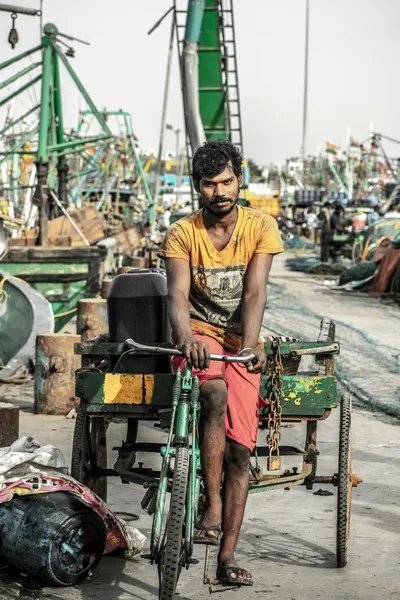Table of Contents
- Introduction: Why Study Caste Cross‑Culturally?
- Conceptual Foundations: What Constitutes a Caste System?
- The South Asian Paradigm: India’s Varna–Jāti Complex
- Parallel South Asian Structures Beyond India
- East Asian Historical Analogues
- Caste‑Like Formations in Africa
- Middle Eastern Examples
- European Historical Estates and Proto‑Caste Situations
- Comparative Insights and Theoretical Implications
- Conclusion: Reimagining Social Mobility Beyond Caste
Introduction: Why Study Caste Cross‑Culturally?
Caste systems are among the most enduring and stratified forms of social inequality. Whereas class systems allow for some degree of achieved mobility, caste orders assign individuals to hierarchical categories at birth and then reproduce those categories through generations by regulating marriage patterns, occupational roles, and ritual status. For sociologists, caste provides a comparative lens through which to examine how ascribed status and social closure operate in diverse cultural contexts. At the undergraduate level, mapping caste beyond South Asia demonstrates two core insights:
- Caste is not geographically unique. Despite its prototypical Indian manifestation, similar formations have appeared on every inhabited continent.
- Caste persists and adapts. Even where legal reforms have abolished hereditary ranking, cultural scripts and institutional legacies continue to structure life chances.
This article surveys well‑documented examples of caste systems across Asia, Africa, the Middle East, and Europe, highlighting both their historical trajectories and their contemporary sociological significance for debates on modernisation, intersectionality, and human rights.
Conceptual Foundations: What Constitutes a Caste System?
Before analysing specific cases, we need an analytic template. Sociologists converge on five criteria that, taken together, distinguish caste from other stratification regimes:
- Hereditary membership: status is ascribed at birth and usually immutable.
- Endogamy: marriage is legally or normatively restricted to within the caste.
- Occupational specialisation: each caste is linked to particular livelihoods or servile obligations.
- Ideologies of purity and pollution: belief systems naturalise hierarchy by framing superior castes as ritually pure.
- Social closure enforced by sanctions: transgressions, such as intercaste unions, provoke ostracism or violence.
These components create a self‑reifying structure in which status consistency (Weber) locks economic, social, and symbolic capital into a single axis. Not every empirical example meets all five criteria perfectly, yet the closer a case aligns with this template, the more analytically useful it becomes in comparative caste scholarship.
The South Asian Paradigm: India’s Varna–Jāti Complex
No examination of caste can avoid India, where the Sanskritic varna model (Brahmin, Kshatriya, Vaishya, Shudra, plus the historically excluded Dalits) intersects with thousands of region‑specific jāti. Scholars debate whether varna is an ideological superstructure while jāti constitutes the lived reality, but both levels function through ritual separation and occupational heredity.
Structural Features
The Indian caste order institutionalises all five criteria listed above. Brahmins monopolise priestly knowledge; Dalits traditionally perform tasks deemed polluting, such as leather tanning or sanitation. Spatial segregation, from village layouts to urban rental markets, reinforces these distinctions. Moreover, linguistic markers—honorifics, dialects, and surname suffixes—signal caste in everyday interaction, illustrating Bourdieu’s notion of symbolic violence.
Contemporary Dynamics and State Intervention
Since independence (1947), India has outlawed “untouchability” and introduced affirmative action through Scheduled Caste and Scheduled Tribe reservations. Yet empirical studies consistently reveal caste disadvantage in education, housing, and labour markets, particularly where caste overlaps with rural underdevelopment and patriarchy. Digital platforms have also reproduced endogamy; online matrimonial sites filter potential spouses by caste even among the highly educated. Thus, modernity has reconfigured rather than eliminated caste’s operative logic.
Parallel South Asian Structures Beyond India
Nepal
Nepal’s 1854 Muluki Ain legally codified a caste order mirroring India’s but layered it onto indigenous ethnic groups. The 2015 constitution formally abolished caste‑based discrimination, yet Dalit households still experience high levels of labour exploitation and social exclusion, particularly in the western hill districts.
Sri Lanka
Among Sinhalese Buddhists, caste historically organised land tenure (e.g., the Goyigama cultivator caste) and temple services, while Tamil Hindus in the north maintained a hierarchy resembling the Tamil Nadu system. Civil war displaced these patterns but did not fully dismantle caste identities, which continue to influence marriage alliances and political patronage networks.
East Asian Historical Analogues
Japan: The Burakumin
During the Tokugawa era (1603–1868), Japan classified commoners into status groups, relegating leather workers, butchers, and executioners to an outcaste category known colloquially as Eta and later as Burakumin. Although the Meiji Restoration (1868) legally equalised subjects, Burakumin remained segregated in hamlets (buraku) and faced marriage barriers well into the twenty‑first century. Contemporary activism by the Buraku Liberation League illustrates how historical stigma survives in the labour market, where Burakumin are over‑represented in subcontracting and low‑wage sectors.
Korea: Baekjeong and the Yangban–Cheonmin Divide
Korean society under the Joseon dynasty (1392–1910) drew a sharp line between the aristocratic Yangban, the commonborn Sangmin, and the “despised” Cheonmin, whose subdivisions included the Baekjeong (butchers and tanners). Colonial and post‑war industrialisation disrupted formal caste designations, yet vestiges endure in rural surnames, clan genealogies, and implicit marital preferences, offering fertile ground for analysing the intergenerational transmission of social capital.
Caste‑Like Formations in Africa
Get the full article AD FREE. Join now for full access to all premium articles.
View Plans & Subscribe Already a member? Log in.





